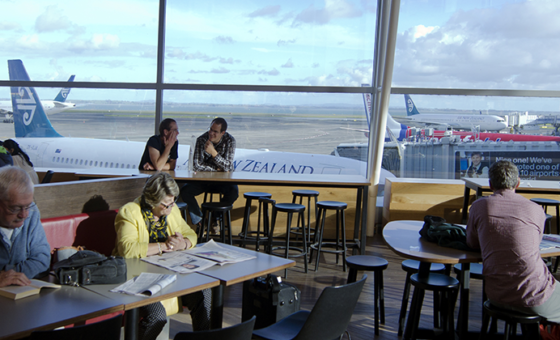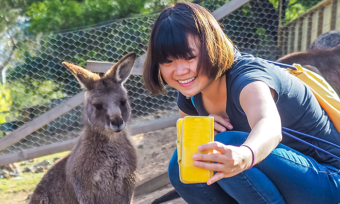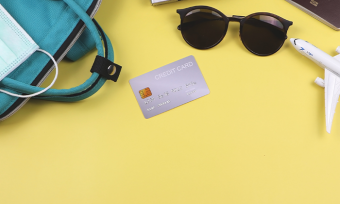Travel money cards allow travellers to access pre-loaded money throughout the world. Find the best-value travel money card for your next trip
Headed off overseas and looking for the best in money cards? Here’s a rundown of some of the most popular cards in New Zealand:

Rewards Credit Cards - June 3rd
KEY POINTS: Air New Zealand has 12 lounges in NZ, four across Australia and one each in Nadi and Rarotonga, plus offers access to many more Star Alliance partner lounges across Australia, Asia and America. You…
– Read more
Banking & Insurance - May 12th
KEY POINTS: Most New Zealand citizens aren't eligible for Higher Education Loan Program (HELP) student loans from the Australian government. Kiwis studying in Australia don't require a student visa and pay the same fees as Australian…
– Read more
Travel Insurance - November 28th
Holidays promise carefree relaxation away from work pressures and domestic chores. However, plenty of unforeseen events can ruin the best-laid vacation plans, from illness and accidents to the loss or theft of possessions. If the worst…
– Read more
Travel Insurance - October 11th
Key points: Travel insurance ensures Kiwis can gain access to potentially life-saving medical treatments when overseas. Travel insurance also covers for the loss or theft of personal possessions while travelling. The New Zealand Government advises all…
– Read moreTravel cards are a type of debit card specially designed for you to spend your money while travelling overseas. They are popular because they’re a convenient way to load up one card with already-converted foreign currency and take it overseas with you. They’re also more secure than carrying cash or traveller’s cheques.
Another advantage is that you can buy this pre-paid card whenever you want, so you can pick a time when the exchange rate is in your favour and the New Zealand dollar is looking strong. Using a pre-paid card means you don’t pay a conversion fee every time you buy something in the local currency. You can even pre-load several currencies if you’re travelling through multiple countries.
You can use your card to withdraw cash from ATMs, shop for souvenirs, pay for restaurant meals, and book accommodation. In addition, you can use it for online transactions – similar to a debit or credit card – and can reload your card or switch currencies online, whenever you need to while travelling.
The ideal card according to Canstar’s research is one that allows the following:
It can be hard to know what travel money card is the best, so our expert researchers have done the hard work for you. Compare travel money cards on our website.
All travellers like to get around differently, and we all have individual needs. But there are some common strategies for making the most of a multi-currency travel money card:
If you run out of local-currency cash, and you’re staying at a really posh hotel, it’s worth asking at the front desk. Some hotels will give you a cash advance and just add it to the bill for your room.
Your awesome holiday can start to feel a little less awesome if you return home to find a bunch of unexpected fees have been charged to your travel money card. Keep in mind that a better conversion rate might still make paying those fees worthwhile. The usual fees you might expect to pay include:
Whether you use a travel money card or a credit card may depend on how often you travel overseas, the cost of having the different cards, and whether or not you plan to withdraw cash from an ATM.
The currency you need to put on your travel money card depends 100% on which countries you will be visiting, but not every currency in the world is available. If you’re travelling somewhere where a travel money card won’t do it, you might want to consider a travel credit or debit card and a supply of cash. We’ve listed the currencies quite commonly offered by New Zealand travel money card providers:
(Not all providers will offer all of these currencies. You should check your card’s product disclosure statement.)
Please note that these are a general explanation of the meaning of terms used in relation to travel money cards. Your provider may use different wording and you should read the terms and conditions of your product carefully to understand what you are and are not covered for. Refer to the product disclosure statement from your provider.
Accommodation: Any type of dwelling or lodging where you pay a fee to stay overnight.
ATM: Automated teller machine: you put your card into the machine and withdraw cash from the account attached to that card.
ATM fee: A fee charged to your travel money card to make a cash withdrawal from an ATM.
Balance: The amount of money remaining and able to be spent on your travel money card at any point in time.
Closing fee: A fee charged to close your travel money card account.
Conversion fee: Any fee charged to convert one currency into another. Usually refers to a fee charged to your travel money card to pay for something in the local currency, but using a different currency loaded on your card.
Conversion rate: Also known as the exchange rate.
Currency: Money.
Currency order: The order in which the next available currency will be selected if you run out of the currency that you are using in the current transaction.
Exchange rate: The ratio at which one currency buys another. Determines the value of one country’s currency by comparison to another.
Foreign currency: The currency of any country outside New Zealand.
Funds: Money.
Home: Your usual place of residence (where you live) in New Zealand.
Inactive fee: A fee charged to your travel money card for not using it in that month.
Initial fee / Issuing fee: A fee charged to your travel money card for opening the account and issuing the card to you.
Journey: The time period from the day you leave home until the day you return home.
Limit: Travel money cards have a limit to the amount of money you can load onto them, the amount you can withdraw in one day, and the amount you can reload onto them in one go.
Pre-paid: A card onto which you load your own money when you open the account. You cannot spend more money than you have loaded onto the card.
Refund: Cash or company credit given to you as reimbursement for any leftover money remaining on your travel money card, according to the terms of your card.
Reload fee: A fee charged to your travel money card for adding an additional amount of money onto your card.
Secondary card: An additional card that also accesses the funds on the same “travel money card” account.
Travel insurance: A form of insurance policy that covers you for various events happening to you while you are away from home. Depending on the policy, it may include medical emergencies, unexpected changes in travel plans outside your control, and lost luggage. For more information, see our travel insurance page.
Traveller’s cheques: A cheque or bill of exchange, available in fixed denominations of various currencies. Can be accepted as cash in many places.